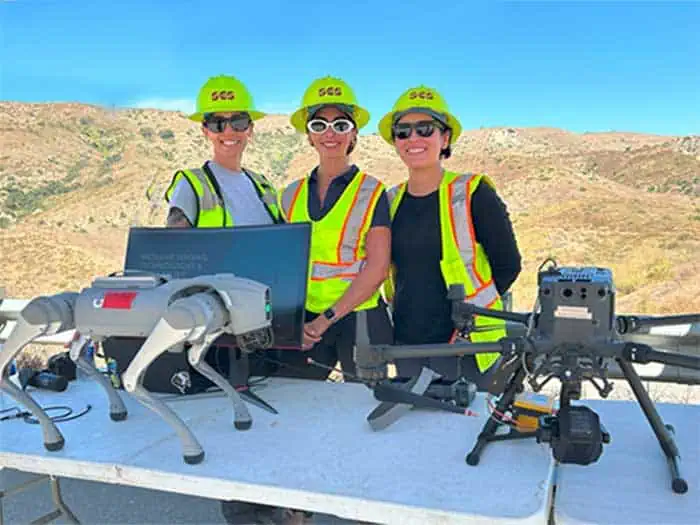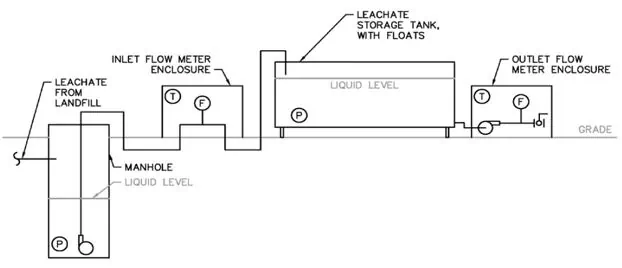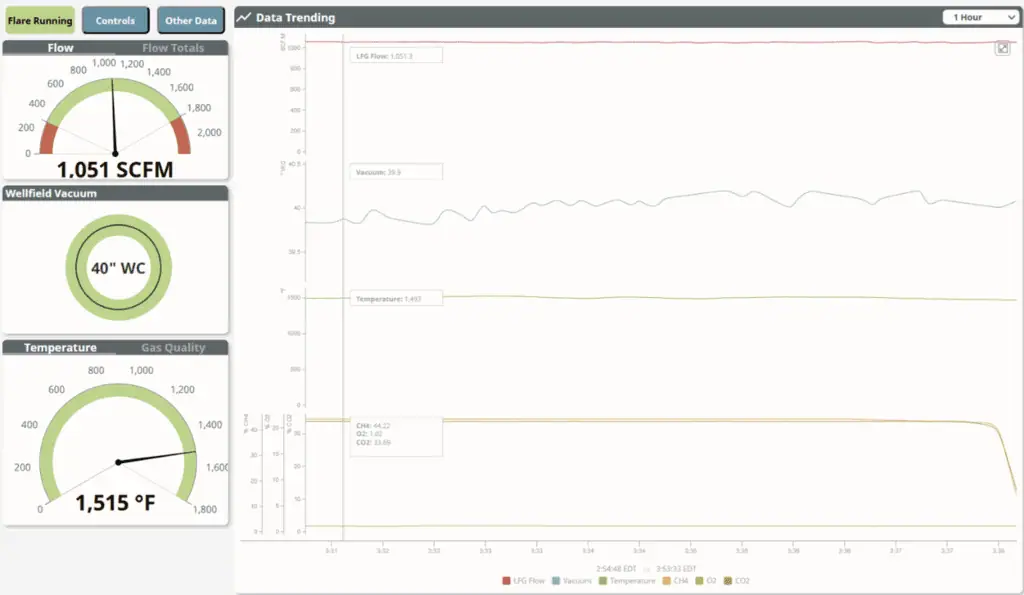


Remote Monitoring and Control Return on Investment Based on Case Studies in the U.S.
Environmental and industrial operators face mounting pressures from complex issues like tightening regulations, rising compliance costs, persistent labor shortages, and aging infrastructure. In this environment, traditional monitoring and maintenance methods, such as manual readings, paper logs, and in-person inspections, often fail to meet the demands of modern operations.
Facilities increasingly adopt Remote Monitoring and Control (RMC) systems to bridge the gap. RMC systems, originally developed to support gas and liquid management in the waste sector, now play a critical role in automating environmental compliance, optimizing equipment performance, and delivering real-time data insights across various facility types. These technologies deliver continuous data, enable remote access, and support faster, more informed decision-making. From pump stations and blowers to temperature and emissions monitoring, the shift to RMC offers not just better oversight but substantial cost savings.
Here, we highlight three real-world case studies where RMC deployments led to measurable financial return on investment and operational gains.
Cutting Air Monitoring Costs at an Industrial Facility
Air monitoring is critical to environmental compliance for landfills, renewable natural gas (RNG) operations, and solid waste facilities. These sites can emit volatile organic compounds (VOCs) and hazardous air pollutants (HAPs) through various processes, including waste decomposition, gas destruction, and material handling. Regulatory agencies require continuous or periodic monitoring to assess pollutant levels, ensure public health protection, and enforce site-specific permit conditions. Failure to comply can result in substantial fines, heightened regulatory scrutiny, and reputational harm.
Regulators required continuous air quality monitoring for a volatile organic compound and a hazardous air pollutant at one industrial site. Manual sampling, performed daily, was costing the facility roughly $1,000 per day. Compliance was non-negotiable, but the cost was becoming unsustainable.
SCS Engineers installed a $90,000 RMC air monitoring system with seven wireless air sensors and a meteorological station. The system automates alarms, regulatory reporting, and historical data logging, all now accessible in real-time.
Within three months, the system paid for itself and saves the client an estimated ~$365,000 annually. Beyond that, it provides peace of mind. Since the system was implemented, the site has avoided regulatory fines, thanks partly to the transparent, consistent data reporting regulators now receive automatically.
Preventing Leachate Tank Overflows and Overbilling
Leachate is the liquid that drains from or through a landfill and contains a complex mix of organic and inorganic compounds, including heavy metals, ammonia, and pathogens. If not properly managed, leachate can contaminate groundwater, damage infrastructure, and trigger costly environmental violations. Closed, unstaffed landfills continue to generate leachate that must be regularly monitored, stored, and hauled away for treatment. Regulatory requirements typically mandate accurate volume tracking, overflow prevention, and timely reporting to demonstrate compliance and mitigate risk.
One SCS client operated a closed landfill with an above-ground leachate tank. With no staff on-site, they faced two persistent problems: haulers had no visibility into daily volumes, leading to inefficiencies and billing confusion, and during winter, the risk of frozen pipes or tank overflow posed serious compliance and environmental hazards.

For $30,000, SCS implemented an RMC system that provided haulers with mobile access to real-time tank levels and flow data, saving the client an estimated $10,000+ annually. Adding new alarms to flag leaks, freezing temperatures, and meter fouling, problems that had previously gone undetected until damage occurred, led to an increase in the efficiency of hauler dispatching, the elimination of billing disputes, and the prevention of at least one major overflow event by the early warning system. “Without a doubt, the system paid for itself through reduced O&M costs and prevented environmental issues,” said one SCS project manager, who quoted an ROI of roughly 1.5 to 3 years, depending on site-specific variables for a system like this.
Automating Flare Restarts at a Closed Landfill
Gas collection and control systems are essential at landfills to manage the decomposition of organic waste, which generates methane, a potent greenhouse gas. Flares are a critical component of these systems, used to combust excess landfill gas and maintain regulatory compliance with air quality and greenhouse gas standards. Reliable flare operation is not only required by permits but also essential to prevent the accumulation of subsurface pressure and potential emissions. Frequent flare-outages can result in safety concerns, odor complaints, noncompliance penalties, and costly emergency callouts. At unstaffed or remote landfills, delays in flare restarts can be especially expensive and disruptive.

At a separate closed landfill, the client spent as much as $35,000 monthly on callouts to manually restart a flare system that frequently shut down due to power fluctuations. Each visit required a time-consuming and costly process in which an employee was required to drive to the site, reset the system, and monitor the restart.
SCS installed an RMC solution costing approximately $85,000, enabling remote flare monitoring, alarm, and restart. With the new system in place, staff could respond immediately from any connected device, eliminating the need for site visits.
The anticipated monthly savings? Roughly $30,000. The investment was a clear financial win with a projected payback period of less than three months.
Efficiency That Pays for Itself
As environmental compliance becomes tighter, labor markets shift, and equipment costs rise, operational efficiency is no longer a luxury; it’s a necessity. Whether you’re operating a landfill, a manufacturing facility, or an industrial site, the pressures are the same: reduce costs, maintain compliance, protect your workforce, preserve your infrastructure, and get a return on your investment.
RMC systems address all these pressures simultaneously. From automated gas monitoring at a landfill to VOC and HAP air monitoring at a facility to liquid hauling validation at an industrial facility, RMC systems are helping operators transform data into action and costs into savings.
In industries where budgets are scrutinized and return on investment must be proven, RMC makes a compelling case. It’s a solution that pays for itself, sometimes within months, while laying the foundation for long-term performance and resilience. The opportunity to modernize and save is right at your fingertips.
Facility Technology Resources: